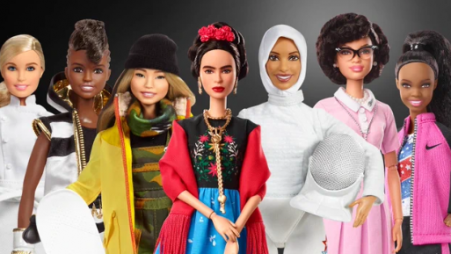How influence of Barbie extends beyond the toys' aisle
Barbie’s journey reflects the ever-changing landscape of play, culture, and gender dynamics, leaving an indelible mark on the world and inspiring countless individuals to dream without limits

The story of Barbie transcends the world of toys and delves into the realms of culture, feminism, and entrepreneurship.
Created by Ruth Handler, co-founder of Mattel, Barbie emerged in the heart of 1959's America as a groundbreaking doll that would go on to challenge conventions and spark conversations across generations.
Ruth Handler's inspiration for Barbie came from observing her daughter, Barbara, play with paper dolls and envision adult roles for them.
Recognising the dearth of adult-like dolls on the market, Handler sought to create a three-dimensional figure that would empower girls to dream beyond traditional domestic roles. Thus, Barbie was born, named after Handler's daughter, and became the embodiment of aspiration.
With her scintillating body, stylish clothes, and portrayal of an array of careers, Barbie challenged traditional doll norms, sparking both enthusiasm and controversy.
Upon her debut, Barbie was met with scepticism and excitement. She defied the prevailing norm of baby dolls. Yet, this defiance sparked conversations about body image and societal standards.
Critics argued that Barbie's proportions were unrealistic and set unattainable beauty ideals, while advocates saw her as a symbol of choice and potential influence on self-esteem.
Barbie's early years saw her adopting various professions, from doctor to astronaut, encouraging girls to explore fields traditionally dominated by men.
Her adaptability reflected the shifting landscape of women's roles in society.
Furthermore, Barbie's diverse range of skin tones and ethnicities was an effort to foster inclusivity, although it took time for these changes to gain traction.
As decades passed, Barbie's influence extended beyond the toy aisle. She was not just a doll, she became a canvas which societal aspirations, trends, cultural icons, inspiring movies, books, and art was painted upon.
Barbie's extensive line of professions encouraged young minds to dream big and challenge traditional gender roles. Her collaborations with renowned figures like fashion designers and celebrities further solidified her status as a global phenomenon.
As Barbie's story also included periods of controversy, her perceived emphasis on materialism and physical appearance led to debates about her impact on children's self-esteem – to which, Mattel responded by launching initiatives to promote positive body image and self-acceptance.
In recent years, Barbie has undergone a significant transformation, embracing technology and modern trends.
The "Barbie: Life in the Dreamhouse" web series, "Barbie 2023" movie and interactive apps brought her into the digital age, engaging a whole new generation.
Furthermore, Barbie's evolution extended to representing diverse abilities and body types, showcasing the brand's commitment to inclusivity.
Barbie is a testament to her resilience and adaptability.
She started as a fashion doll but evolved into a symbol of empowerment, diversity, and societal progress.
Her journey reflects the ever-changing landscape of play, culture, and gender dynamics, leaving an indelible mark on the world and inspiring countless individuals to dream without limits.
Aysha Tofail is currently studying at the Mass Communications and Journalism Department of Dhaka University. She loves to read novels, creative writing, likes traveling and photography.



 Keep updated, follow The Business Standard's Google news channel
Keep updated, follow The Business Standard's Google news channel
















